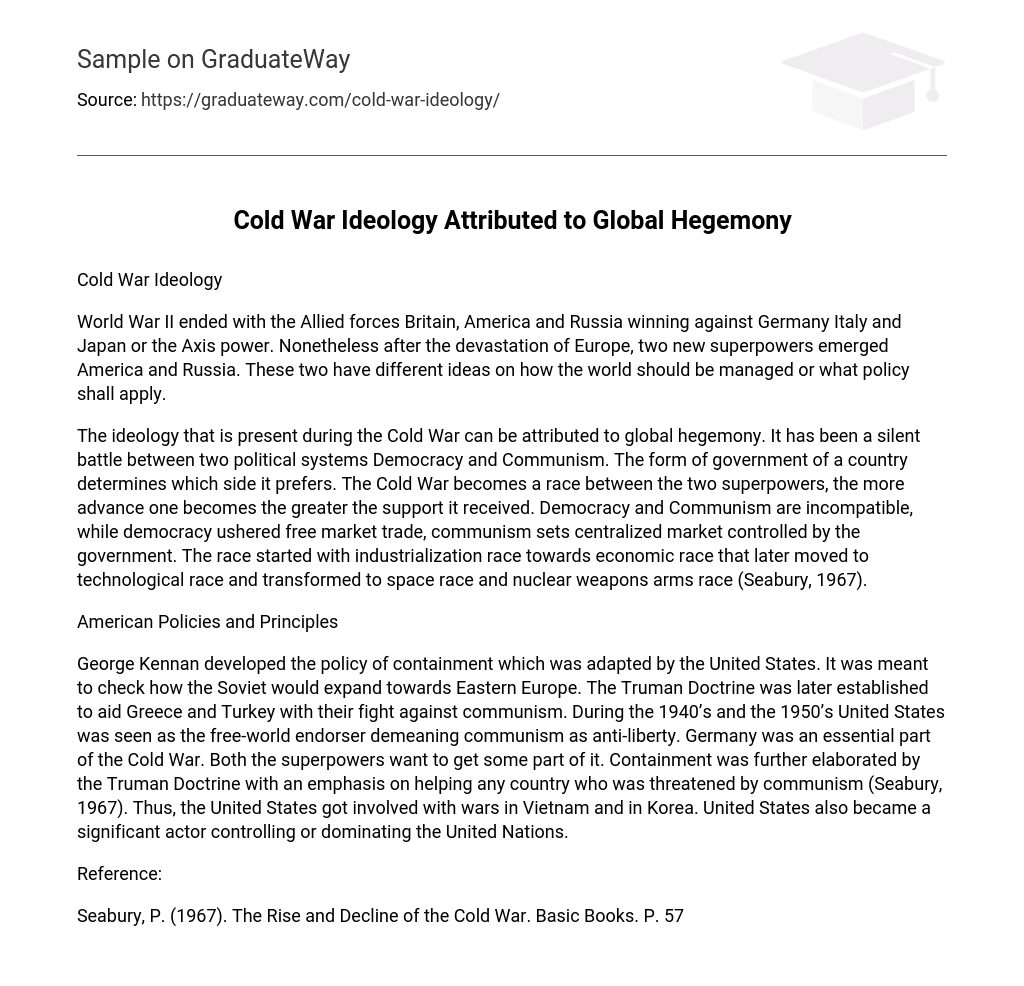Cold War Ideology
World War II ended with the Allied forces Britain, America and Russia winning against Germany Italy and Japan or the Axis power. Nonetheless after the devastation of Europe, two new superpowers emerged America and Russia. These two have different ideas on how the world should be managed or what policy shall apply.
The ideology that is present during the Cold War can be attributed to global hegemony. It has been a silent battle between two political systems Democracy and Communism. The form of government of a country determines which side it prefers. The Cold War becomes a race between the two superpowers, the more advance one becomes the greater the support it received. Democracy and Communism are incompatible, while democracy ushered free market trade, communism sets centralized market controlled by the government. The race started with industrialization race towards economic race that later moved to technological race and transformed to space race and nuclear weapons arms race (Seabury, 1967).
American Policies and Principles
George Kennan developed the policy of containment which was adapted by the United States. It was meant to check how the Soviet would expand towards Eastern Europe. The Truman Doctrine was later established to aid Greece and Turkey with their fight against communism. During the 1940’s and the 1950’s United States was seen as the free-world endorser demeaning communism as anti-liberty. Germany was an essential part of the Cold War. Both the superpowers want to get some part of it. Containment was further elaborated by the Truman Doctrine with an emphasis on helping any country who was threatened by communism (Seabury, 1967). Thus, the United States got involved with wars in Vietnam and in Korea. United States also became a significant actor controlling or dominating the United Nations.
Reference:
Seabury, P. (1967). The Rise and Decline of the Cold War. Basic Books. P. 57





